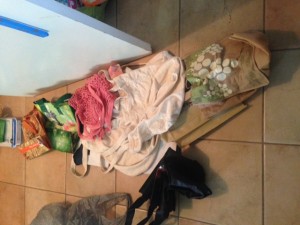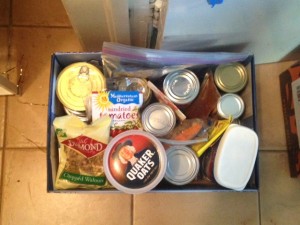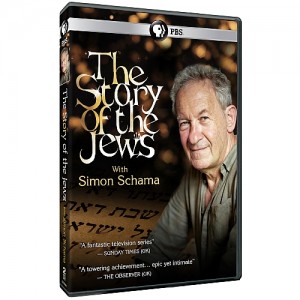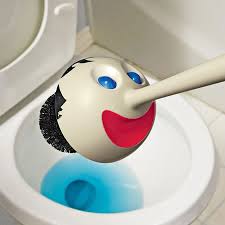You know how some people are into other people’s kitchens or looking in medicine cabinets that aren’t theirs?
I’m a little obsessed with pantries.
Maybe it’s the fear of scarcity embedded in my Eastern European DNA, but having extra stock on hand brings a certain security to my domestic dream life. To me, there’s nothing more breathtaking than color-coded dry goods and cereals arranged alphabetically, extra ketchups at the ready and the dog food in its own special plastic bin.
If I come to your house, I will pretend to be looking for the bathroom just so I can catch a glimpse of your spaghetti shelf. When I am not pretending to work while shopping for shoes, I am looking at pantry porn.
I peek into other people’s pantries so often that my cousin Charles calls me “Larder Girl.”
That’s why this is a total embarrassment:
That cluttery hot mess is my pantry, my very first real one after living in college dorms and crappy apartments and leeeetle tiiiiiny houses in Northern California that barely had enough cupboard space to hold a bag of rice and two dishes.
When we moved to Savannah, my very own pantry was a non-negotiable point for the realtor. But life got super busy real fast, and I never got a chance to paint it. Or remove the hideous shelf paper from 1978.
Before every Passover, when I make a pass at removing the extra pasta, cereal and other chametz-y items from my pantry, I swear to the Almighty that next year, I will clean it out and make it a shrine of gratitude to the bounty that is my life but right now God will just have to be cool with me throwing out the half-eaten bag of stale pretzels.
Well, the Lord Up Above must be just thrilled, ’cause this is the year I make good on my promise.
If I had known it would take three hours just to get everything out, I would have gone to the beach. Instead, I made some important discoveries:
1. Several cans of tomatoes that expired in 2009
2. Hideous flowered shelf paper from 1952 underneath the gross white shelf paper from 1978. Shelf paper has no shelf life. Who knew?
3. That I am a shopping bag hoarder. My bubbie would be so, so proud.
Next, I cleaned and prepped to paint. You can see the layers of history. And also Clarabell’s tushy:
One of the things that shocked me was just how much dang food I’d stuffed in there over the years and forgotten about. Honestly, how many surplus bags of sundried tomatoes does a family really need? I decided to make a couple of boxes of the Second Harvest Food Bank.
Then it was time for the makeover. I chose a bright yellow called “Goldenrod” for the paint, thinking that such a sunny color would cheer me up on the evenings when I would rather trim my cuticles with pinking shears instead of making dinner. El Yenta Man says I should have picked a different shade for the ceiling and the baseboards, but I was all, “Dude, it’s a pantry, not a dining room at our weekend ski chalet and besides don’t you have some laundry to do?”
The selection of shelf paper does not appear to have improved in the past several decades, but I found a fake walnut wood print that reminded me of a Martha Stewart magazine spread I saw while I was getting my last mammogram. If you are not aware, contact paper was actually developed by Joseph Goebbels and really ought to be illegal for its ability to incite massive amounts of suffering. Little Yenta Girl was enormously helpful in unwrapping my face from the sticky sides before I suffocated to death.
Together we watched the paint dry and arranged everything just so, leaving out some empty boxes for whatever chametz remains come Sunday evening. (On a related note, there will be cereal for dinner all week, folks!)
Now look at my pretty pantry!
Are you not impressed? Here’s another view:
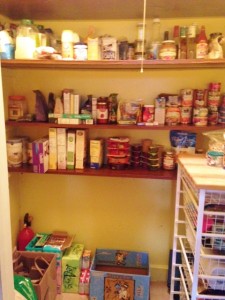
The shopping bag drawer now only contains enough shopping bags for a small army instead of the entire battalion of those Chinese Terracotta soldiers.
Maybe no one will go meshuggneh on Pintrest about it, but a grand improvement, no? I even installed hooks for the broom and everything. (Fine. They were stick-on kind. But STILL.)
And next year, I’ll get around to putting the dog food in its own container. Promise.


